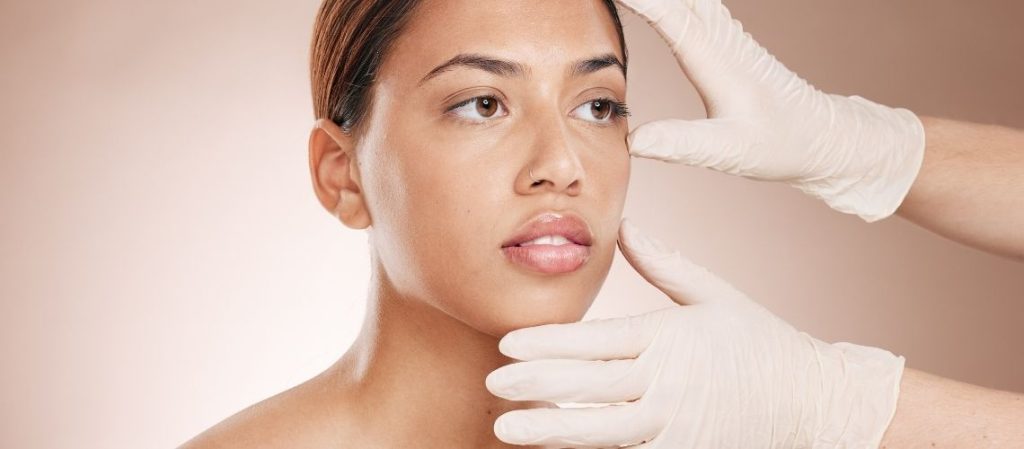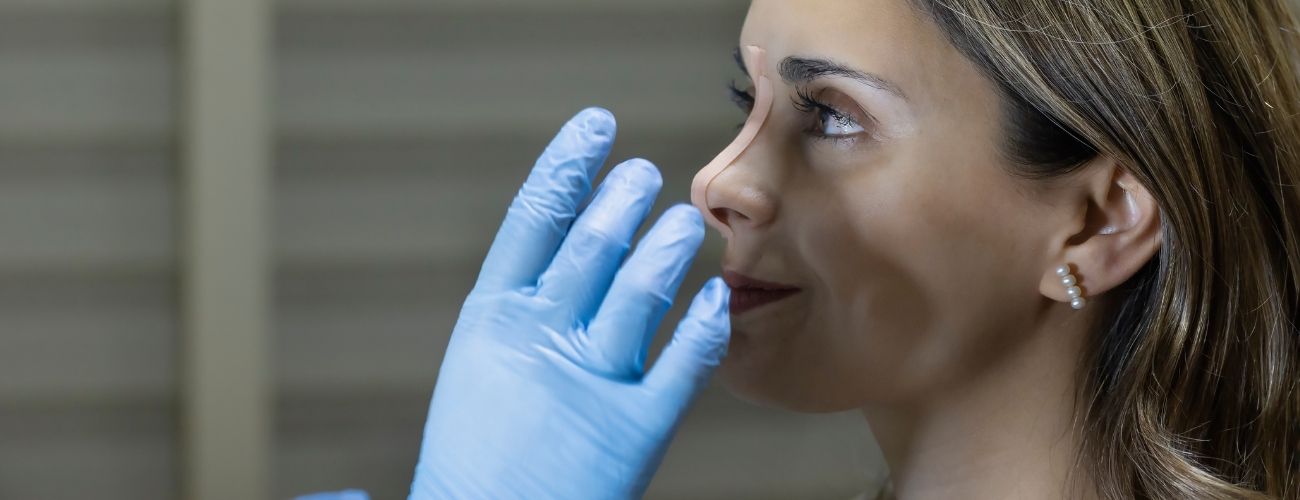Revision rhinoplasty is more complex than primary surgery and carries a higher risk of complications. Scar tissue, weakened cartilage, and prior surgical changes make the procedure challenging.
Potential problems include persistent asymmetry, breathing difficulties, or unsatisfactory aesthetic outcomes. These risks highlight the importance of selecting a highly skilled revision specialist.
Detailed preoperative evaluation is essential. Surgeons often use cartilage grafts or advanced reconstruction techniques to restore both function and appearance.
While complications can occur, careful planning and surgical expertise significantly reduce risks. Patients should maintain realistic expectations and follow all postoperative instructions.
İçindekiler
Enhanced Risk of Scar Tissue Formation
Following an initial surgery, the nasal structure becomes inherently more susceptible to the formation of dense scar tissue. Consequently, this phenomenon can mar the aesthetic harmony of the nose, detracting from the smooth contours that patients desire.
Furthermore, the accumulation of scar tissue bears the potential to impede nasal airflow, thus complicating breathing functions. The intricacies of dealing with previously altered tissues underscore the necessity for:
- A surgeon’s adeptness in navigating the unique challenges posed by scarred nasal landscapes.
- The application of refined surgical techniques aimed at minimizing additional scarring.
- Post-operative care strategies designed to support optimal healing and reduce scar visibility.
As such, while the pursuit of aesthetic refinement and functional improvement motivates individuals to undergo revision rhinoplasty, the heightened risk of scarring demands careful consideration. Through the collaborative efforts of patient and surgeon, strategies to mitigate this risk can be effectively implemented, paving the way for a more favorable outcome.
Risks to Blood Flow Integrity in Secondary Rhinoplasty
Revision rhinoplasty presents unique challenges, not least of which pertains to the nose’s intricate vascular system. The operation, especially when addressing comprehensive adjustments, significantly heightens the risk of vascular disruption.
This fragility stems from the necessity to navigate through scar tissue, which may obscure the original anatomical landmarks. As a result, ensuring adequate nourishment to nasal tissues becomes a precarious endeavor. Consequently, two primary complications may arise:
- Skin necrosis, where tissue death occurs due to insufficient blood supply.
- Prolonged recovery periods, exacerbated by the compromised healing environment.
Hence, the surgeon’s expertise in maneuvering through this labyrinth of vessels is critical. Adequate blood flow is the lifeline for successful healing post-surgery. Moreover, a detailed preoperative analysis is indispensable for minimizing these risks.
Ultimately, awareness and strategic planning form the cornerstone of mitigating potential adverse effects on the nasal blood supply during revision rhinoplasty.
Respiratory Challenges Following Revision Rhinoplasty
Such alterations, while aimed at enhancing form or correcting previous errors, might inadvertently restrict airflow. This surgical endeavor, therefore, can become a double-edged sword.
On one hand, it holds the promise of an improved nasal appearance and function; on the other, it poses potential risks to the very essence of nasal functionality – breathing. The consequences of compromised nasal passages are not trivial. They include:
- Increased difficulty in breathing, which might become apparent not just during physical exertion but also in moments of rest.
- A heightened sense of congestion, leading to discomfort and an incessant need for relief.
- The potential development of sleep apnea, a condition marked by periodic cessation of breathing during sleep, can profoundly impact one’s quality of life.
Thus, the decision to undergo revision rhinoplasty demands a careful consideration of these risks. Furthermore, it underscores the importance of selecting a surgeon with a deep understanding of the delicate balance between form and function.
Suboptimal Aesthetic Results in Revision Rhinoplasty
Pursuing perfection through revision rhinoplasty carries inherent risks, among which achieving less than satisfactory aesthetic outcomes looms large. Despite the surgeon’s expertise, certain factors contribute to these challenges:
- Scar tissue from previous surgeries may restrict modifications.
- The unique anatomy of each patient sets limits on achievable changes.
- Unforeseen complications during surgery can derail expected results.
Each of these elements plays a crucial role in the complexity of revision procedures. Scar tissue, for instance, can not only limit the extent of modifications but also affect healing post-surgery. Similarly, the patient’s unique nasal structure might not accommodate all desired alterations, making it imperative for expectations to be realistic from the onset.
Moreover, even with meticulous planning, unexpected issues during surgery can impact the outcome. Hence, while revision rhinoplasty offers a path towards aesthetic enhancement, it also demands an acceptance of its limitations and uncertainties.
Elevated Infection Risks in Subsequent Nasal Surgeries
Undergoing a second or subsequent rhinoplasty inherently presents a higher complexity than the initial procedure. Consequently, the journey toward perfecting one’s nasal appearance through revision rhinoplasty carries an augmented risk of infection.
This potential setback can significantly impede the healing process, occasionally leading to scarring or additional complications that mar the desired outcome.
In light of these concerns, the emphasis on stringent sterile practices during surgery cannot be overstated. Furthermore, adherence to a comprehensive post-operative care regimen is critical for mitigating infection risks. Key components include:
- Regular cleaning of the surgical area with prescribed solutions
- Timely administration of antibiotics, if prescribed, to prevent infection
- Avoidance of activities that could compromise the nasal area’s integrity
Hence, the path to achieving aesthetic goals via revision rhinoplasty necessitates a careful balancing act. By prioritizing impeccable surgical standards and diligent aftercare, the heightened risk of infection can be substantially reduced, paving the way for a smoother recovery and the attainment of the envisioned nasal harmony.

Prof. Dr. Murat Songu – Rhinoplasty (Nose Aesthetics) Specialist
Prof. Dr. Murat Songu was born in 1976 in Izmir and completed his medical education at the Ege University Faculty of Medicine. He then completed his residency training in the Department of Otorhinolaryngology at Celal Bayar University. Between 2005 and 2006, he received advanced training in rhinoplasty, functional nasal surgery, and skull base surgery in Bordeaux, France, working with leading rhinologists such as Prof. Vincent Darrouzet and Dr. Guy Lacher.
Prioritizing natural appearance, the preservation of breathing function, and facial aesthetic harmony, Prof. Dr. Songu is nationally and internationally recognized for his expertise in open rhinoplasty, piezo (ultrasonic) rhinoplasty, revision rhinoplasty, tipplasty, and functional septorhinoplasty. He has participated as an instructor and speaker at numerous rhinoplasty congresses worldwide.
With over 100 scientific publications, book chapters, and more than 1700 citations, Prof. Dr. Murat Songu is one of Türkiye’s most respected academics in the field of rhinoplasty, combining natural, facially harmonious, and functional results with scientific and aesthetic excellence.









